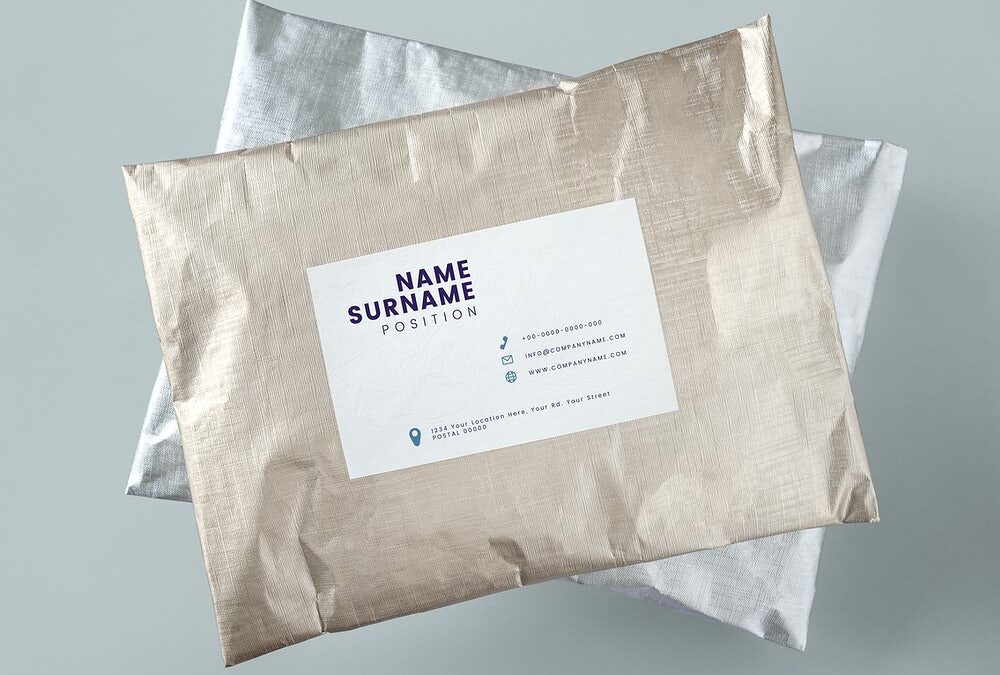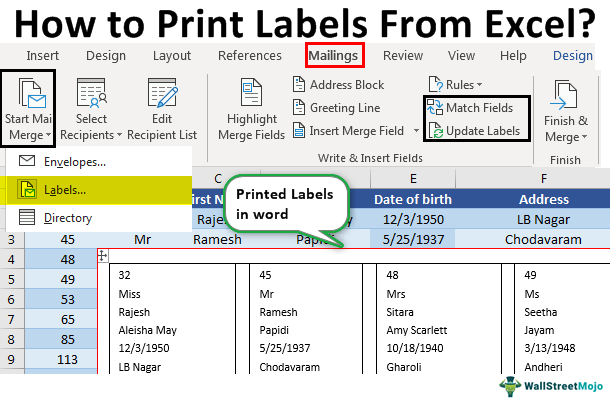

Here you can Edit individual letters and click OK to save the letters. #Mail merge from excel to word 2010 labels update
If it doesn’t look right, return to Step 4 to edit the fields to be merged and remember to update labels with the fields to be merged.
If your creating Letters write the letter but don’t touch the merge fields which appear surrounded by chevrons (>).Ĭlick on Next Record or Previous Record to preview each individual letter. If your creating Labels, click ‘Update all Labels’.  Rearrange the position of each field until you are happy with the layout. To add the recipient information, place the curser at the desired point then click on ‘More items’ select each merge field and click Insert. In this step you will choose which fields to merge into the document and where they are positioned. Step 4: Write your letter/ arrange your labels Review the data source and use the check boxes to add or remove recipient details from the merge. Select the file, and click Open, if it is an Excel file, select the sheet (worksheet), click OK.
Rearrange the position of each field until you are happy with the layout. To add the recipient information, place the curser at the desired point then click on ‘More items’ select each merge field and click Insert. In this step you will choose which fields to merge into the document and where they are positioned. Step 4: Write your letter/ arrange your labels Review the data source and use the check boxes to add or remove recipient details from the merge. Select the file, and click Open, if it is an Excel file, select the sheet (worksheet), click OK.  Click Browse and locate the existing file on your computer. This can be stored in a Word or Excel file, where each row contains individual recipient information In this step you will locate your file of recipient information (name, address). Select the Label Vendor and Product Number (this information is found on the packet of labels that you will use (Avery A4/A5, L7159). If you’re creating Labels, click Label Options. If you’re creating Letters select Use the current document. Select the document type (Letters, Labels). Click on Start Mail Merge, then Step by Step Mail Merge Wizard. Open your Word document, you can begin with a blank document or you can write a letter. 2) Your recipient information (name, address) stored in a separate file, such as an Excel Spread sheet. You will need: 1) A letter or blank document. Use the Mail Merge step-by-step Wizard when you want to create a set of labels or documents such as a standard letter that is sent to multiple recipients. Locate the object library in the list and add a check mark to it.(Instructions are based on Microsoft Word 2007, but are similar in Microsoft Word 2010). If you receive a "User-defined type not defined" error, you need to set a reference to another object library. Set a reference to other Object Libraries Open the VBA Editor by pressing Alt+F11 on your keyboard. In older versions look at Tools, Macro Security.Īfter you test the macro and see that it works, you can either leave macro security set to low or sign the macro. To check your macro security in any Office 2010 application and newer, go to File, Options, Trust Center and open Trust Center Settings, and change the Macro Settings. You can sign the macro when it is finished and change the macro security to notify. You could choose the option Notification for all macros, then accept it each time you restart Outlook, however, because it's somewhat hard to sneak macros into Outlook (unlike in Word and Excel), allowing all macros is safe, especially during the testing phase. The macros will not work with the top two options that disable all macros or unsigned macros. Body = Replace(.Body, "", strAcctMgrName)įirst: You need to have macro security set to the lowest setting, Enable all macros during testing. Set olItem = olApp.CreateItemFromTemplate(appdata & "\Microsoft\Templates\macro-test.oft") 'Set olItem = olApp.CreateItem(olMailItem) 'Create Mail Item and view before sending StrAcctMgrName = xlSheet.Range("F" & rCount)ĪcctMgrEmail = xlSheet.Range("G" & rCount) When you're ready, click the Finish & Merge button, and choose to send the result to a new document or directly to the printer. You can press Preview Results to see what the labels will look like. 'strAttachment = strAttachPath & xlSheet.Range("E" & rCount) On the Mailings ribbon, click Update Labels, which repeats the merge fields on all the other labels. StrFirstname = xlSheet.Range("A" & rCount) Set olApp = CreateObject("Outlook.Application")ĭo Until Trim(xlSheet.Range("A" & rCount)) = "" Set olApp = GetObject(, "Outlook.Application") StrAttachPath = enviro & "\Documents\Send\" ' you need to set a reference to Outlook Object Library (Yes, I know, I'm not creative with demo values and prefer to use Excel's features to create demo values.) The finished merge will look like the following. Using unique values allows us to use VBA's Replace function. While you could use standard merge fields or bookmarks, you would need to use the Word Object Library to update the fields. It also sends the message From an address in the worksheet.Ĭreate an Outlook template, entering unique values where the merge fields would be entered. This macro reads values from an Excel worksheet and sends a mail merge, replacing unique values in the Outlook template with values in the worksheet.
Click Browse and locate the existing file on your computer. This can be stored in a Word or Excel file, where each row contains individual recipient information In this step you will locate your file of recipient information (name, address). Select the Label Vendor and Product Number (this information is found on the packet of labels that you will use (Avery A4/A5, L7159). If you’re creating Labels, click Label Options. If you’re creating Letters select Use the current document. Select the document type (Letters, Labels). Click on Start Mail Merge, then Step by Step Mail Merge Wizard. Open your Word document, you can begin with a blank document or you can write a letter. 2) Your recipient information (name, address) stored in a separate file, such as an Excel Spread sheet. You will need: 1) A letter or blank document. Use the Mail Merge step-by-step Wizard when you want to create a set of labels or documents such as a standard letter that is sent to multiple recipients. Locate the object library in the list and add a check mark to it.(Instructions are based on Microsoft Word 2007, but are similar in Microsoft Word 2010). If you receive a "User-defined type not defined" error, you need to set a reference to another object library. Set a reference to other Object Libraries Open the VBA Editor by pressing Alt+F11 on your keyboard. In older versions look at Tools, Macro Security.Īfter you test the macro and see that it works, you can either leave macro security set to low or sign the macro. To check your macro security in any Office 2010 application and newer, go to File, Options, Trust Center and open Trust Center Settings, and change the Macro Settings. You can sign the macro when it is finished and change the macro security to notify. You could choose the option Notification for all macros, then accept it each time you restart Outlook, however, because it's somewhat hard to sneak macros into Outlook (unlike in Word and Excel), allowing all macros is safe, especially during the testing phase. The macros will not work with the top two options that disable all macros or unsigned macros. Body = Replace(.Body, "", strAcctMgrName)įirst: You need to have macro security set to the lowest setting, Enable all macros during testing. Set olItem = olApp.CreateItemFromTemplate(appdata & "\Microsoft\Templates\macro-test.oft") 'Set olItem = olApp.CreateItem(olMailItem) 'Create Mail Item and view before sending StrAcctMgrName = xlSheet.Range("F" & rCount)ĪcctMgrEmail = xlSheet.Range("G" & rCount) When you're ready, click the Finish & Merge button, and choose to send the result to a new document or directly to the printer. You can press Preview Results to see what the labels will look like. 'strAttachment = strAttachPath & xlSheet.Range("E" & rCount) On the Mailings ribbon, click Update Labels, which repeats the merge fields on all the other labels. StrFirstname = xlSheet.Range("A" & rCount) Set olApp = CreateObject("Outlook.Application")ĭo Until Trim(xlSheet.Range("A" & rCount)) = "" Set olApp = GetObject(, "Outlook.Application") StrAttachPath = enviro & "\Documents\Send\" ' you need to set a reference to Outlook Object Library (Yes, I know, I'm not creative with demo values and prefer to use Excel's features to create demo values.) The finished merge will look like the following. Using unique values allows us to use VBA's Replace function. While you could use standard merge fields or bookmarks, you would need to use the Word Object Library to update the fields. It also sends the message From an address in the worksheet.Ĭreate an Outlook template, entering unique values where the merge fields would be entered. This macro reads values from an Excel worksheet and sends a mail merge, replacing unique values in the Outlook template with values in the worksheet.










